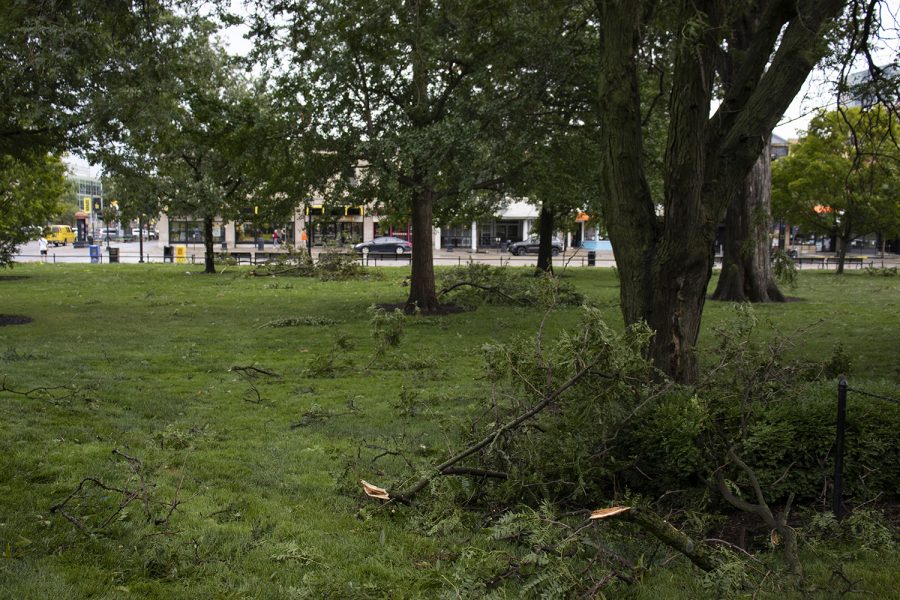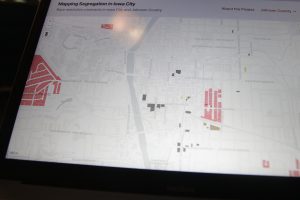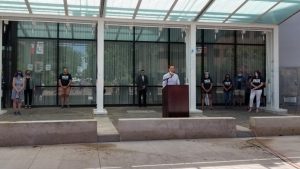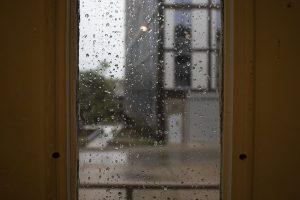Johnson County to assess costs for tree replacements after derecho
After a derecho uprooted many trees in the area, county officials are creating tree-subsidizing programs to alleviate some of the costs to Johnson County.
Fallen tree limbs are seen in the green space in front of downtown on Monday, Aug. 10, 2020. With wind gusts around 80 mph, the derecho –a widespread wind damage event produced by severe thunderstorms– hit Iowa City in the afternoon causing tree damage and power outages.
August 26, 2020
When hurricane-level winds hit Iowa many Johnson County families felt as if their lives, along with their trees, were “uprooted”. After the Aug. 10 storm, streets in the area were lined with limbs, sticks and sometimes entire trees.
“We didn’t sustain much damage compared to Linn County, but we still lost about 1,000 trees,” said Juli Seydell Johnson, director of Iowa City Parks and Recreation.
Johnson said the figure accounted only for the trees that were public property. To replace trees, the city will be subsidizing a tree planting program in which Iowa City homeowners will be able to receive free trees to replace fallen ones, she said.
The city hopes to have more information on this by the end of the week, and Johnson County Conservation Project Manager Brad Freidhof said residents should be conscious of what trees they are planting near their homes.
“When these storms go on, wise tree selection is important,” Freidhof said. “Fast-growing shade trees might seem like a great idea at the time, but they are more susceptible to being less sturdy. Trees such as oak trees will take longer to grow, but there’s also less of a chance of them falling on your house. Trees are great but you need to make sure you are selecting the right ones.”
The University of Iowa campus was also blanketed in fallen trees and branches.
RELATED: Storm tears through Iowa City, leaves thousands without power
University of Iowa Arborist Andy Dahl said the UI lost about 75 trees on the main campus and somewhere between 125 to 150 trees total.
Between the costs of new trees and labor, Dahl said he estimates the costs of replacing the trees on campus alone will be a six-figure dollar amount.
Although the damage in Johnson County was not as severe as Cedar Rapids, and other areas, the parks in this area still saw a lot of damage. Freidhof has been working alongside others to try and ensure that the Johnson County parks and trails are safe before opening back up.
He said that when the storm hit, campers at Kent Park huddled together in stormproof shelters. Those campers were unable to leave the park at first because of trees covering roads. The campground remains closed due to the unsafe conditions but Dahl estimated the park to be back open by the end of this week.
Although Kent Park and other public recreation areas may be reopened by as early as the end of the week, Friedhof said the cleanup process will take a lot longer.
“The storm has resulted in a long-term cleanup that could last months or even years,” Freidhof said. “There has been no full assessment of all of the damages done to parks in the area yet.”
On top of taking months or years to clean up damages, Friedhof said replanting trees is time consuming and requires a lot of resources.
In the more heavily trafficked areas such as Kent Park, Friedhof said residents could purchase memorial trees in memory of loved ones, which would cut back on some of the costs. As for places that are more densely wooded, he said nature will take charge and more trees will eventually grow.
Even with optimism towards replacing trees, other issues can resurface in the future, he said. Damaged trees are susceptible to diseases and other insects, which can cause tremendous issues down the road.
Freidhof added that it is important, especially recently, to have parks for the community.
“When COVID hit, people realized the importance of the outdoors,” he said. “They relied on the outdoors for their mental and physical health and used the parks to hike and swim. Between COVID and the derecho, it helped people understand the value of natural resources and why it is important to preserve them.”






